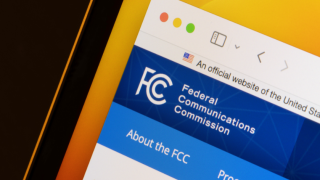The tech giant unveiled plans to develop new large telco models, or LTMs, and custom-built agents for the telco industry designed to automate network workflows.
Nvidia also showcased new updates for its Aerial suite of AI tools for designing and operating wireless networks, including simulation platforms capable of creating precise digital replicas of entire wireless systems.
“Next-generation wireless networks will be revolutionary, and we have an unprecedented opportunity to ensure AI is woven in from the start,” said Jensen Huang, founder and CEO of Nvidia.
While Nvidia’s AI chips remain its core strength, its industry-focused AI solutions have bolstered its sky-high position, with the chipmaker using its latest telco announcements at GTC to reinforce that strategy.
Chief among the announcements were custom solutions for automating operations, including AI models and agentic tools capable of predicting network failures and monitoring systems in real time.

Both SoftBank and Tech Mahindra are among the early adopters of Nvidia’s LTMs and AI agents, while Nvidia said the likes of Amdocs, BubbleRAN and ServiceNow are “dialling up their network operations and optimisation” with its new AI agents.
SoftBank, which enjoys a prominent relationship with Nvidia on telecom-related services, trained its new LTM on its own network data, using it to automatically reconfigure systems depending on network traffic
Nvidia also touts its new telco-focused AI models as cybersecurity tools, suggesting they’re capable of scanning for network cyber risks in real-time.
“Just as LLMs understand and generate human language and Nvidia BioNeMo NIM microservices understand the language of biological data for drug, discovery, LTMs now enable AI agents to master the language of telecom networks,” Lilac Ilan, Nvidia’s global head of business development for AI-powered operations, wrote in a blog post.
Wireless network platform updates: Ariel simulation improvements

Along with telco-focused AI agents and models, Nvidia also unveiled new additions for its Aerial Research portfolio, providing new AI-powered tools to enhance wireless network simulations
The expanded portfolio now features Aerial Omniverse Digital Twin (AODT), which network operators can use to create accurate simulations of their entire systems, whether on-premises, in the public cloud, or using a laptop.
Also added was the Aerial Commercial Test Bed (ARC-OTA), a full-stack AI-RAN deployment system that lets developers deploy new AI models over the air and test them in real time.
There’s also the Aerial Commercial Test Bed (ARC-OTA), an open source GPU-accelerated library for research in communication systems, which includes a ray tracer for radio propagation and a versatile linklevel simulator.
Kanika Atri, the senior director for telco marketing at Nvidia, said the expanded portfolio will boost research efforts for AI RAN and 6G.
“The telecom industry is increasingly embracing AI to deliver seamless connections — even in conditions of poor signal strength — while maximizing sustainability and spectral efficiency, the amount of information that can be transmitted per unit of bandwidth,” Atri wrote in a company blog post.
Nvidia eyes AI for 6G
Beyond the product and service updates was a pledge by the tech giant to work with some of the biggest names in telecoms to research and develop AI-augmented hardware, software and architecture for 6G.
The likes of T-Mobile, Cisco, and Mitre have all signed up to work with the chipmaker on developing next-generation wireless offerings, with a focus on ensuring AI integrations will be fundamental to the next connectivity standard.
“Working with leaders in the field, we’re building an AI-enhanced 6G network that achieves extreme spectral efficiency,” CEO Huang said.
Nvidia plans to work with firms in the telco space to create a wireless network stack based on its existing AI Aerial platform.
The tech giant suggests that AI RAN efforts are a “precursor” to AI-native 6G wireless networks, with efforts like its T-Mobile T-Mobile team-up, aim to create concepts for 6G network capabilities.
“Working with these additional industry leaders on research to natively integrate AI into the network as we begin the journey to 6G will enable the network performance, efficiency and scale to power the next generation of experiences that customers and businesses expect,” said Mike Sievert, CEO of T-Mobile.
RELATED STORIES
EY partners with Nvidia to launch AI-driven telecom solutions
Tech Mahindra partners with Nvidia and AWS on telco AI model








